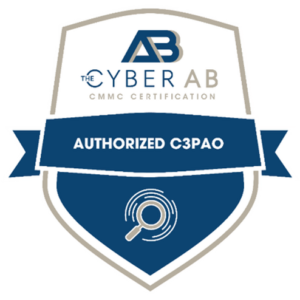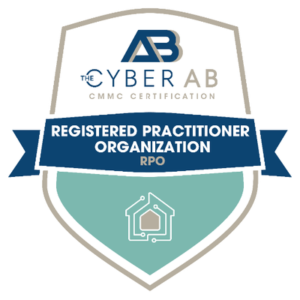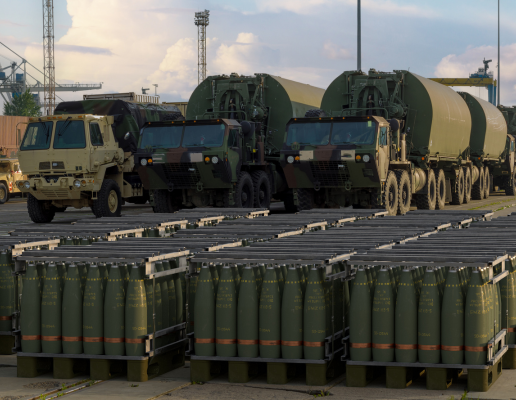Resources
Explore spotlights, readiness kits, and planning tools tailored to the needs of contractors across aerospace, healthcare, manufacturing, and emerging defense technologies.


CMMC is not one-size-fits-all. We tailor our compliance services to meet the operational realities of each defense contractor we serve.


CMMC isn’t just about checklists—it’s about proving that your security practices work in the real world. That’s why industry-specific knowledge is critical. From technical scoping to evidence collection, an assessor who understands your business model, environment, and operations will save you time, reduce risk, and help you get certified faster.

Relevant Scoping and Control Interpretation
Each industry handles CUI differently. Assessors who understand your workflows, systems, and data types can more accurately define your boundary—and avoid over- or under-scoping.
Insights That Go Beyond the Baseline
A knowledgeable assessor doesn’t just check compliance—they offer clarity and context. This means your team walks away knowing how to maintain certification and improve security posture long-term.
High-Tech + Classified Workflows
Support cleared or export-controlled environments while aligning with CMMC’s strict handling of Controlled Unclassified Information (CUI). We help ensure sensitive workflows don’t become compliance bottlenecks.
Aerospace and defense manufacturers are deeply embedded in the national security supply chain—and that means heightened CMMC scrutiny. Our team works with prime and sub-tier contractors to address compliance across production systems, supplier relationships, and sensitive documentation.
We bring direct experience with DFARS, NIST 800-171, and Level 2 assessment requirements to help you:

Manufacturers supporting defense programs must secure CUI without disrupting production. From CNC machines to legacy OT systems, we help align your operations with CMMC through pragmatic, shop-floor-ready strategies.

When healthcare contractors support the VA, DoD, or military health programs, they may handle CUI in addition to PHI. Our experts help ensure your systems, vendors, and documentation align with CMMC Level 2—without duplicating effort across HIPAA and DoD-specific requirements.

Engineering firms must show that CUI shared in CAD systems, modeling platforms, or design files is adequately protected. We help streamline documentation and readiness activities for this technical audience.

Universities and federally funded research labs often handle CUI under DoD contracts. We help academic institutions and research centers navigate CMMC readiness without disrupting critical research timelines.

CMMC enforcement is pushing deeper into the supply chain. Whether you're a Tier 1 integrator or sub-tier component supplier, we help validate controls and documentation that reflect how CUI moves through your org.

IT service firms—MSPs, MSSPs, integrators—often support DIB customers and may handle CUI in tickets, backups, or hosted systems. We help you establish defensible boundaries and clarify your CMMC obligations.

CUI in satellite operations may span from prototype R&D to telemetry and launch logistics. We help contractors secure these environments and meet CMMC expectations while preserving engineering velocity.

From DoD facility builds to infrastructure modernization, CUI often lives in drawings, specs, and cloud-based project platforms. We help firms in AEC protect sensitive information across field and back-office systems.

Contractors operating within energy or utility environments face layered compliance challenges—CMMC, NERC, and more. We help you scope your boundary and address CUI security without compromising operational integrity.

Telecom contractors working with the DoD often manage network equipment, switches, and critical comms. We help ensure these systems are configured and documented to meet CMMC expectations for CUI protection.

Defense-aligned vehicle and transport system manufacturers must demonstrate CUI protection across engineering and manufacturing phases. We help bridge the gap between innovation, supply chain complexity, and compliance.

Weapons and munitions manufacturers face heightened scrutiny around ITAR, CUI, and program-specific handling rules. We guide these contractors through compliant system design and secure data workflows.

Please note that this FAQ is a summary and should be used in conjunction with the official CMMC documentation for precise guidance and compliance instructions.
Manufacturers often struggle with securing OT systems, defining clear boundaries between production networks and business systems, and collecting audit-ready evidence from complex environments.
Engineering contractors must protect CUI in CAD files, modeling platforms, and design documents. Boundary scoping and version control are essential to ensure these systems meet CMMC requirements.
MSPs and MSSPs often touch CUI indirectly—via tickets, backups, or hosting. Identifying exposure points and clarifying shared responsibility with clients are key steps toward compliance.
Yes—especially when handling DoD facility design or project data containing CUI. Cloud-based project management tools must be secured, and subcontractor access needs to be tightly controlled.
You must define a clear boundary around the environments that handle CUI. Only the systems, personnel, and data flows tied to DoD contracts need to meet CMMC requirements, but isolation must be well-documented.
Absolutely. An assessor familiar with your sector can interpret requirements correctly, recognize appropriate evidence, and reduce unnecessary delays caused by misunderstanding your environment.
If you're handling CUI for defense or federal projects, CMMC applies—even in environments also governed by NERC CIP or other standards. Segmentation and documentation strategies must reflect both operational risk and compliance needs.
Telecom contractors supporting DoD often manage distributed infrastructure and sensitive communications equipment. Identifying where CUI transits through your systems and documenting protections across layers is critical.
CUI may appear in design files, control systems, and subcontractor relationships. Consistent documentation across engineering, production, and suppliers is key to passing a CMMC assessment.
Yes—if your work includes handling CUI, whether in R&D, telemetry, or launch operations. Export-controlled data may overlap, but CMMC focuses specifically on protecting CUI throughout the lifecycle.
CMMC is now reaching deeper into subcontractor tiers. If you're handling contracts, specifications, or other documents containing CUI—even indirectly—you need to demonstrate how that information is protected.
These contractors typically deal with heightened security expectations. Ensuring that CUI and export-controlled data are segmented and protected within production environments is essential.
If you handle CUI alongside PHI, CMMC applies. The challenge lies in distinguishing and securing both data types across shared systems and workflows while maintaining documentation that supports compliance.
Explore spotlights, readiness kits, and planning tools tailored to the needs of contractors across aerospace, healthcare, manufacturing, and emerging defense technologies.
Your customers rely on you for precision, innovation, and security. We help you meet the same standard when it comes to CMMC compliance—so you can stay eligible for contracts and stay focused on what matters most.